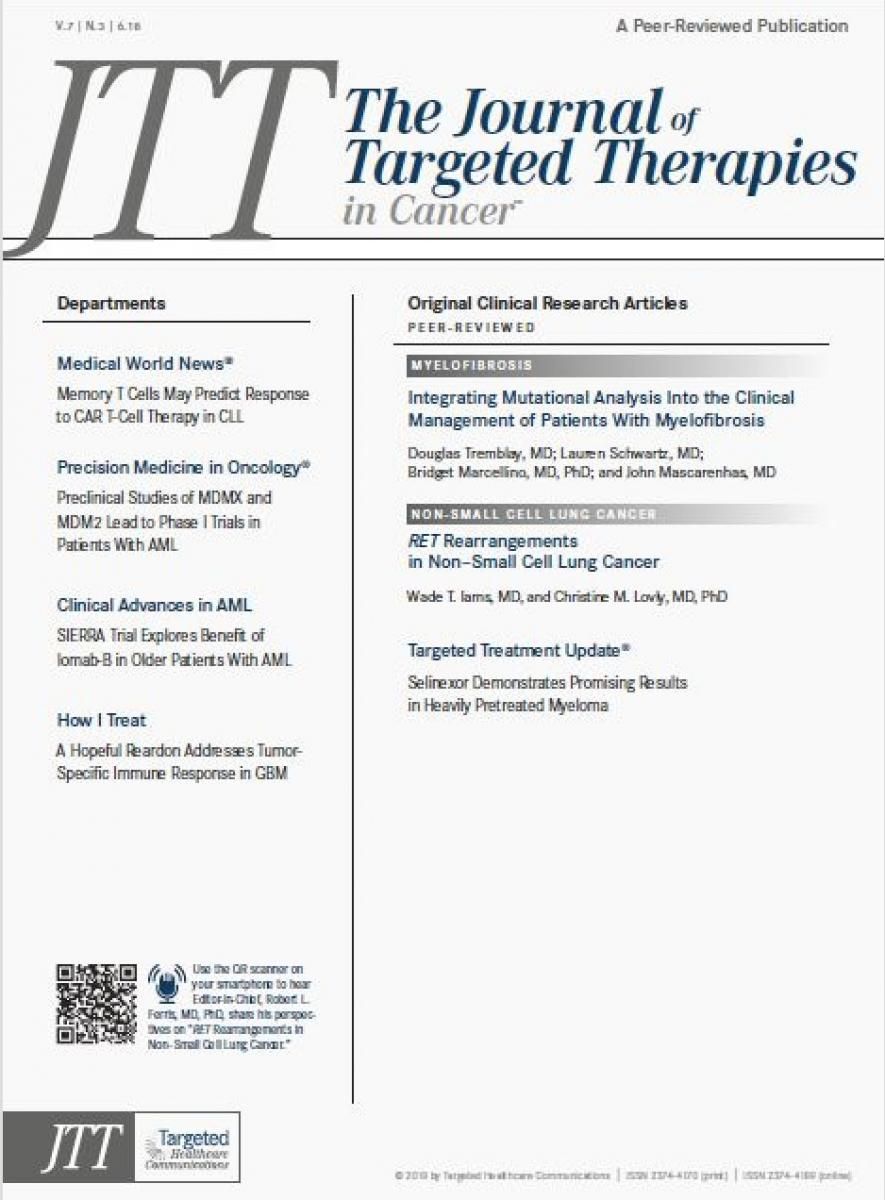Refinements in the Use of Genomic Rearrangements Signals Exciting Times Ahead
Robert L. Ferris, MD, PhD, Physician Editor-In-Chief of the Journal of Targeted Therapies, discusses genomic rearrangements and the allelic fraction of that genomic rearrangement as a major component of an individual’s cancer.
Robert L. Ferris, MD, PhD
In this issue ofJournal of Targeted Therapies in Cancer™, Iams and Lovly describe a model system for patients with nonsmall cell lung cancer (NSCLC) for precision medicine based on identification and specific targeting of fusion partners that trigger activation of the RET gene. Currently, we envision the type of patient and the mechanisms that permit us to identify a subset of patients who may benefit from precision oncology. In NSCLC, chromosomal rearrangements involving the RET tyrosine kinase gene are known oncogenic drivers in 1% to 2% of patients. These RET rearrangements occur with characteristic partners, and this is reviewed in this issue by Iams and Lovly. Once the identification of these chromosomal rearrangements triggers activation of the RET tyrosine kinase, which most commonly occur in young patients with adenocarcinoma histology and minimal smoking history, therapeutic targeting of the RET-fusion driven NSCLCs may take the form of treatment with broad spectrum tyrosine kinase inhibitors with anti-RET activity. These include cabozantinib (Cabometyx), lenvatinib (Lenvima), and sunitinib (Sutent). Response rates range from 20% to 50% in largely pretreated patients. Although sunitinib has been used in fewer patients and additional agents are being developed, the main point is the same: Genomic rearrangements triggering an oncogene addiction can be therapeutically targeted. This allows us to identify mechanisms and monitor potential mechanisms of acquired resistance. Such precision oncology may enable us to combine oncogene-targeted therapies to prolong survival and to clarify the specific mechanism of action of these multikinase inhibitors, such as cabozantinib, vandetanib (Caprelsa), and sunitinib.
What is unclear from the article by Iams and Lovly is the extent to which genomic rearrangements create a true oncogene addiction of those cancer cells and to what extent the allelic fraction of that genomic rearrangement is a major component of that individual’s cancer because of tumor heterogeneity. The question remains whether resistance is intrinsic to the rearranged cancer cell, somehow extrinsic due to lack of that genomic rearrangement, or some other feature that the rearrangement and RET tyrosine kinase activity may drive and induce.
Biomarker Testing Paves the Way for Better Targeted Therapies in NSCLC
April 16th 2024At a live virtual event, Edward S. Kim, MD, MBA, discussed the evolving landscape of biomarker testing before making treatment decisions for patients with early-stage non–small cell lung cancer (NSCLC).
Read More
FDA Grants Breakthrough Therapy Designation to Sunvozertinib in EGFR Exon20+ NSCLC
April 9th 2024Sunvozertinib was granted breakthrough therapy designation by the FDA for the first-line treatment of patients with locally advanced or metastatic non-small cell lung cancer harboring an EGFR exon 20 insertion mutation.
Read More
